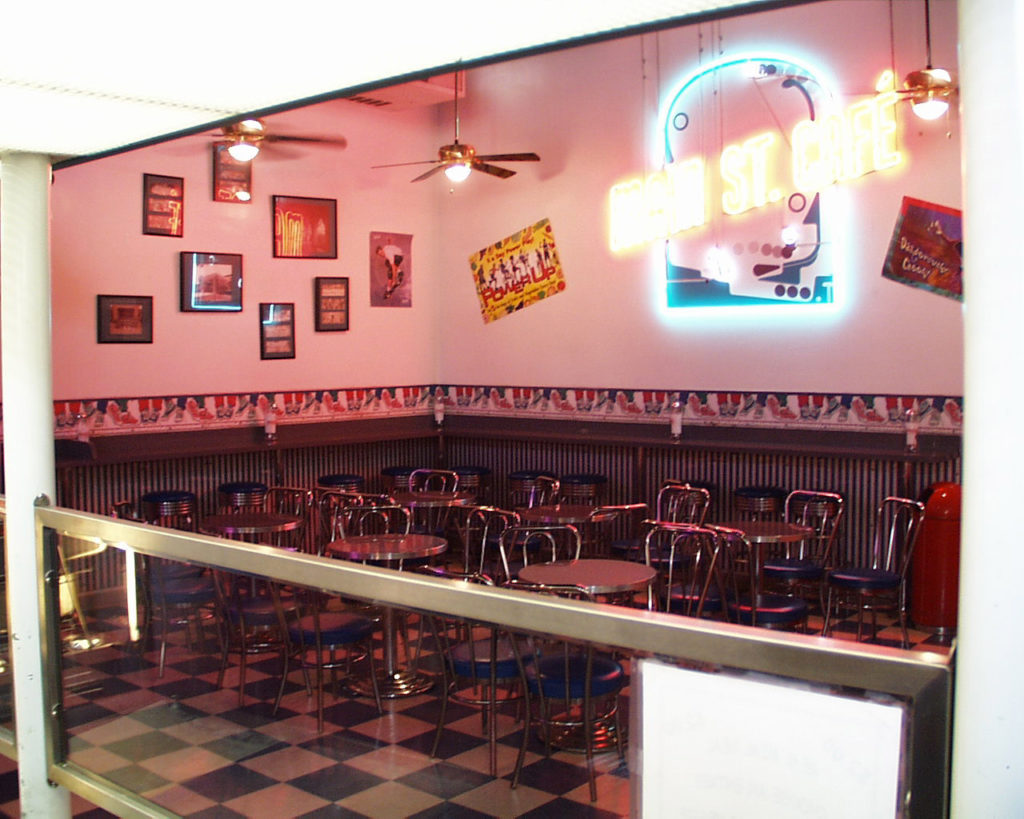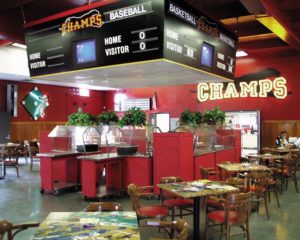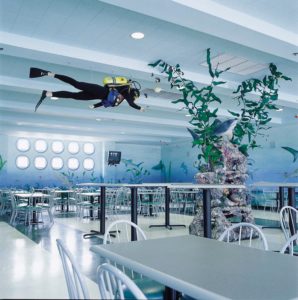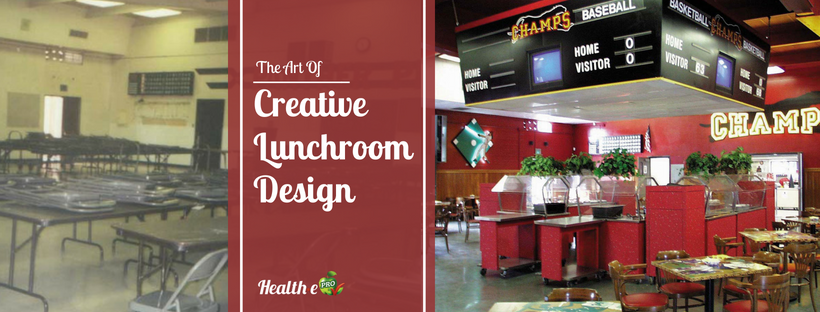How did you start with school lunchroom design?
My theory before I started designing lunchrooms was that environment affects behavior. The very first school that I decided to do was a very old school built in the 1800s. We had old equipment; the oldest piece had a manufacturing tag of 1911 and it was still a functioning piece of equipment in that kitchen. What could we DO with this school?
But we could not get more than two kids to come in there and eat everyday, because it was a dismal place and it had been known as the “free lunch line” for decades.. I believed that changing the environment would affect buying patterns because restaurants like ESPN Zone, Red Robin, and CHAMPS were seeing great success. They had bright-colored walls, scoreboards in the middle of the dining area, and I wanted to test out my theory at our schools.
Our kitchen and cafeteria was a small building but had huge windows and great architecture. Most institutional kitchens don’t have that. But the architecture lent itself well to a 50’s diner theme. I could see that it could work. We were serving a lot of those 50’s themed foods: hamburgers, fries, tacos–good food!
We closed the serving area of that kitchen for an entire school year, but we were still prepping food. I knew conceptually what we were doing, but we had no plans. It was like, “Let’s paint here! Let’s do this. Let’s do that.” We finished the diner over the summer and opened that Fall.The first day we had over 200 kids. We even had to create a new seating area. It was such a cool place: we had a jukebox, neon lights, used that old refrigerator as part of the decor–it was THE cutest place, and everybody instantly loved it.

We went from zero to hero literally overnight. We couldn’t work fast enough, and we never changed the food–just the environment. We put the food in little red plastic baskets. The presentation was different, but it tasted the exact same. It proved my point that the environment makes a difference, and it changed the behavior. We didn’t see the behavioral issues that were not atypical in cafeterias. The word spread across the school district and principals were calling me asking, “Can you do that in my school?”
How did you go from there?
I wanted every school to have its own theme. So I’d think, What’s the mascot? What would fit? What would be perfect? In one high school, the principal used to call me once a month and say, “We’ve got to do something about the fights happening in the dining room.” Discipline issues were not my problem, but my theory was that if you changed the environment, kids would behave differently. We did the CHAMPS dining room in that school, and one of the most joyful days was standing in the dining room when the bell would ring and kids would run in there and save places for their friends. Not just casually saving places, but pulling tables together and lying on top of them so they could sit together in this great new space. What had been a disgusting place and one full of fights became this joyful, fun place.

We experienced the same things over and over again.
Will students choose healthy food because of creative school lunchroom design? We can influence their behavior if it’s an environment that’s conducive to dining, not just eating. Going from the cafeteria concept to the dining concept radically changed things.
Last dining room was over-the-top amazing. Shark Tank didn’t yet exist, but we created a shark tank room. We had scuba divers hanging from the ceiling, a coral reef in the center of the room. We put saltwater tanks in there with saltwater fish. There was one whole wall that had glass where you looked in from the outside. We bought bubble walls, so when you looked in from the outside, you looked through bubbles to look in from the outside. We had a surfer (full-size) suspended from the ceiling. It was this wild, incredible place.

The incredible thing is that we regularly recouped our investments in six months or less with sales and these dining rooms became beloved in our schools. We had such a great, fun time. It changed the industry. My goal is to leave the industry better than I found it, and I think we did that.

